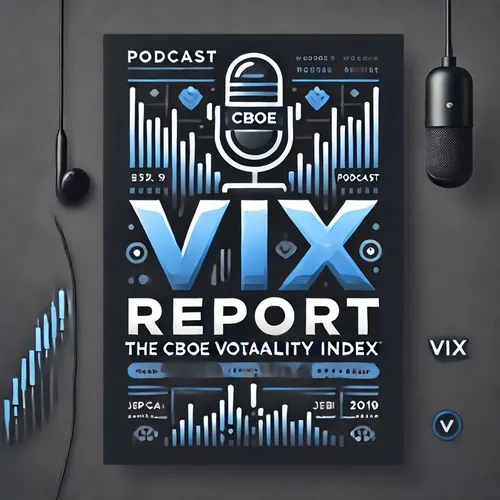VIX Dips to 17.83, Signaling Reduced Market Volatility Expectations
- Author
- QP-1
- Published
- Mon 19 May 2025
- Episode Link
- https://www.spreaker.com/episode/vix-dips-to-17-83-signaling-reduced-market-volatility-expectations--66146674
As of May 19, 2025, the Cboe Volatility Index (VIX), often referred to as the "fear index," remains a crucial barometer of market sentiment and expected volatility over the coming month. On May 16, 2025, the index was last reported to be at 17.83. This represents no change from the previous day's close on May 15, when it was also 17.83, and marks a decrease from 18.62 on May 14.
The VIX calculations are based on options trading on the S&P 500, measuring expected price swings or volatility in the underlying index. A decrease from May 14 to May 15 represents a percent change of approximately -4.23%, indicating a notable reduction in anticipated market volatility. Such a decrease is often interpreted as an indicator of increased market stability and reduced investor anxiety.
A decline in the VIX is commonly associated with positive market sentiment, reflecting confidence among investors. This contrasts with periods of economic turbulence or uncertainty, where the index typically rises due to fears of increased volatility. In recent weeks, several factors could have contributed to shaping this sentiment.
Market sentiment appears to have been bolstered by favorable economic conditions and macroeconomic data suggesting stability. Recent announcements of steady interest rates, along with positive employment figures and controlled inflation, have possibly played a part in soothing market anxieties. Furthermore, central banks may have signaled commitments to maintaining supportive monetary policies, reassuring investors of a continuation of conducive financial conditions.
Global events, which often exert a profound influence on investor sentiment, appear to have stabilized in recent weeks. Tensions in geopolitical hotspots have momentarily eased, and there seems to be a lack of disruptive global economic news. This backdrop perhaps contributes to the muted volatility expectations as represented by the current VIX level.
Investors typically use the VIX as one tool among many to gauge the market’s risk environment. Lower VIX levels do not guarantee perpetually stable markets; rather, they offer a snapshot of current expectation based on available data and market positioning. While the present decline may suggest optimism, it’s worth remembering that any significant news developments could rapidly alter market expectations and the VIX itself.
The relationship between the VIX and financial markets remains complex. As a forward-looking measure, the VIX can be a valuable part of the investor's toolkit, but it should be understood within the broader context of ongoing market analysis. The volatility index provides insight into market sentiment but
